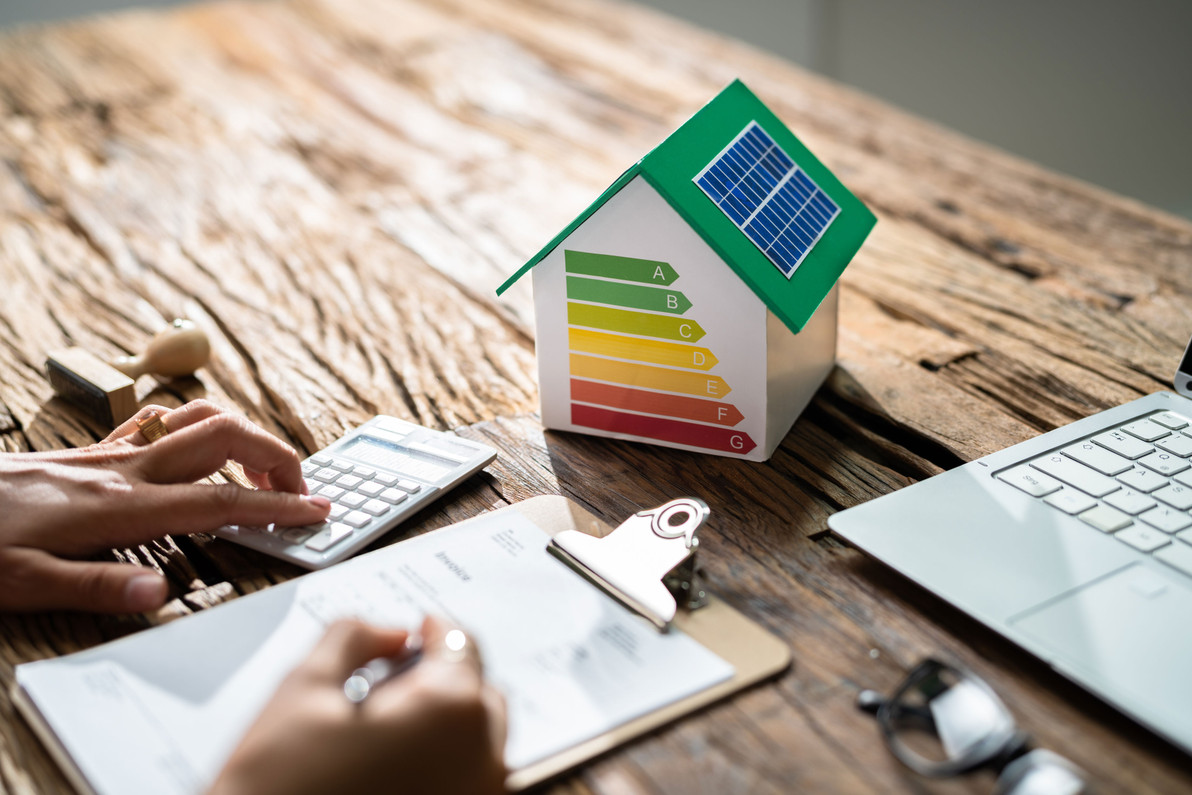How Using LED Lighting and Dimmer Switches Can Save Energy and Money
Did you know that by switching your light fixtures to incorporate dimmer switches, you could save 20% on energy costs?
The cost of living crisis affects everybody, and many people search for energy-saving tips. We’re here to offer you some help by recommending that you transition to LED lighting and dimmer switches.
Naturally, LED lighting has many benefits, which we all know about. Better energy efficiency, a longer lifespan, and more natural light colours are all standard perks. However, what about dimmer switches? How do they help with saving energy and money?
To understand that, we’ll be taking a deep dive into how dimmer switches work and how you can incorporate them. If you want to know how to save money and change your lighting setup for the better, keep reading.
What is a Dimmer Switch?
So, let’s get the technical bits out of the way. What is a dimmer switch, and how does it work?
Over the last few years, we’ve seen lighting technology improve massively. When the dimmer switch came along, it changed the game.
So a dimmer switch works by using a “Triac switch“, which rapidly turns a light circuit on and off. This action helps to reduce the energy which flows into the lightbulb. A dimmer switch will cut the power running through the circuit roughly 120 times in a second.
While we perceive the light as a constant, uninterrupted source, that’s just because our eyes can’t pick up the interruptions. The light from a dimmer switch is constantly flickering.
Also, you should know that not all bulbs work with dimmer switches, especially older models. New bulbs are great at energy conservation and last a lot longer than traditional light bulbs. However, this doesn’t translate to compatibility with older light fixtures.
If you try to replace an incandescent light bulb with an older dimmer, you’ll notice the incompatibility. This is because new bulbs use such a small fraction of energy that an older dimmer switch doesn’t register. Therefore, using a brand new dimmer switch is recommended. Something like this Studio Range 4 Gang Dimmer is a good choice in that regard.
How Does a Dimmer Switch Save Money?
There are quite a few ways in which a dimmer switch can help to save money in the home. Dimmer switches are highly prized as a resource because they help cut costs quite a way.
A dimmer switch can save up to 20% on your electric bill because you reduce the energy needed. However, it’s essential to understand that this is dependent on the way that you use the dimmer switch, as well as the type of bulb.
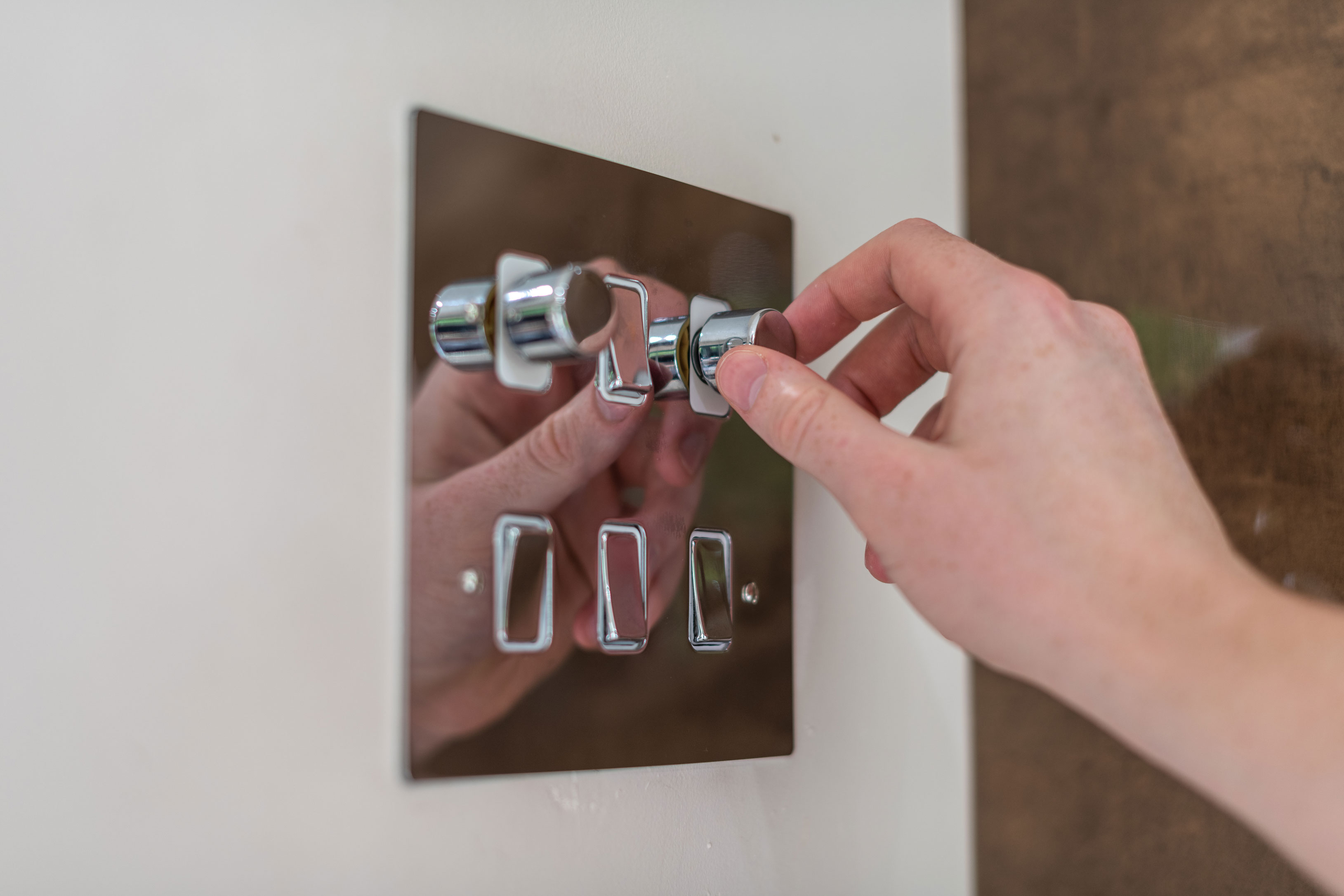
The Benefits of Dimmer Switches
Firstly, there are the energy savings that you get. When you dim your lights, you use less energy to provide light to the home. Obviously, this is good when it comes to cutting costs. It depends on your bulb type and dimmer switches, but it is roughly 20% of your lighting costs.
Second of all, your lights will last longer. Turning down, the brightness of the bulb increases the lifespan in quite a way. It’s possible to double the lifespan of a standard lightbulb by dimming the light. When you consider how long LED lights can last, it’s clear that you’re going to save money on bulbs in the long term by extending the lifespan by a year or two.
Finally, you can use a dimmer switch to control the room’s appearance. Each room will benefit from a different type of lighting, and with a dimmer switch, you control that lighting. This makes it very easy to ensure that your lighting looks great regardless of the setting.
Different Types of Dimmer Switches
It’s important to understand that different types of dimmer switches correspond to contrasting situations. Picking the right option for your needs will make all the difference in getting the best results.
These dimmer switches can vary substantially concerning complexity and usage. There is a simple, two-way dimmer switch model that can be incorporated, but there are also products such as an LED dimmer switch.
It becomes quite complicated when you factor in that there are also smart dimmer switches, LED switches, and three-way dimmer switches. There are even some dimmer switches which are built for energy-efficient compact fluorescent light bulbs or CFL models. Something like this Vintage Range 4 Gang Dimmer (for LED) in Polished Brass is pretty flexible.
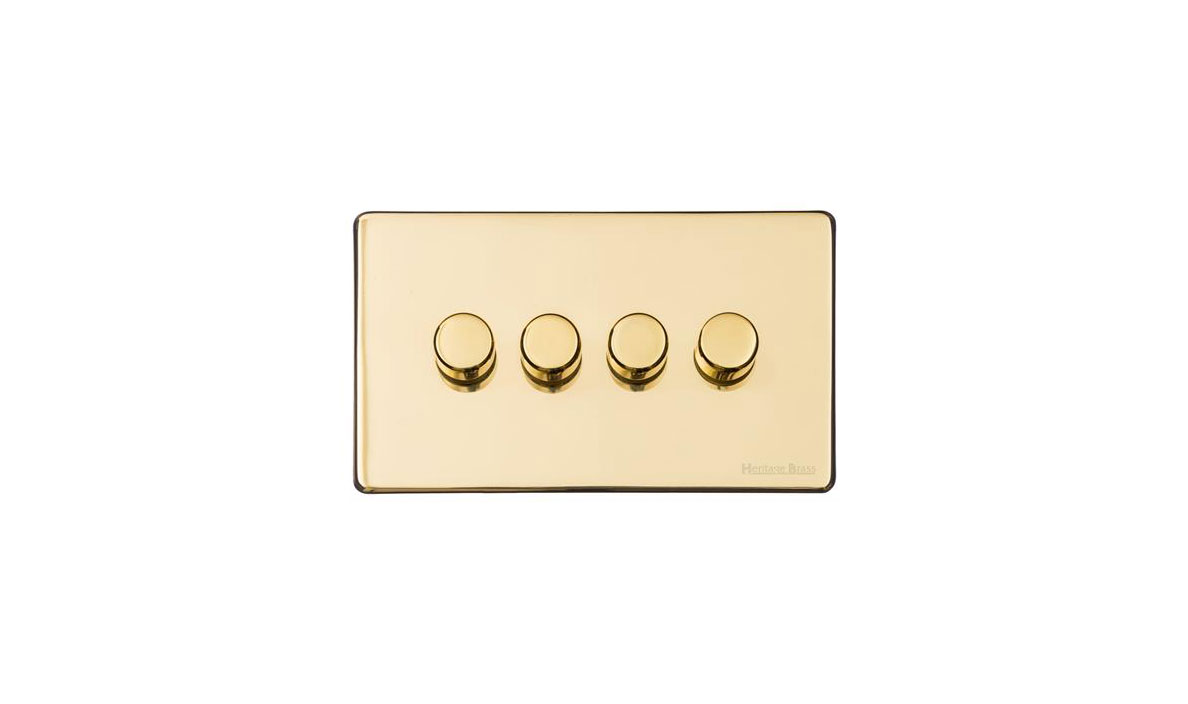
Dimmer Switches and Light Bulbs
Once you’ve chosen a bulb, you have to work out what type of controller you want for the said bulb. There are different types of controls to choose from.
You’ve got rotary-style knobs which you can turn left and right as you need, or toggle switches. These types of controls can be slid up and down as necessary to fade or amplify light.
Alternatively, you have rocker controls and toggle switches for ease of use. These latter offerings also have dim-adjustment pieces and the typical on/off mechanism.
You’ve also got such things as “scene selection” controls which let you control the switching and dimming of your lights in groups. These are more complex than other models and feature multiple buttons for different light settings. However, it does let you experiment properly with a layered design.
You’ve got access to wall-box dimmers, which mount inside your existing wall switch box. These are built to integrate into your existing aesthetic for easy usage. You can incorporate them and have presets across the room or use touchable dimmers. These need a touch of the hand – no switch required.
Finally, one type of dimmer switch which is growing in popularity is the remote-control variant. You can access it anywhere in the house, which is nice.
Why Are LED Lights More Energy Efficient?
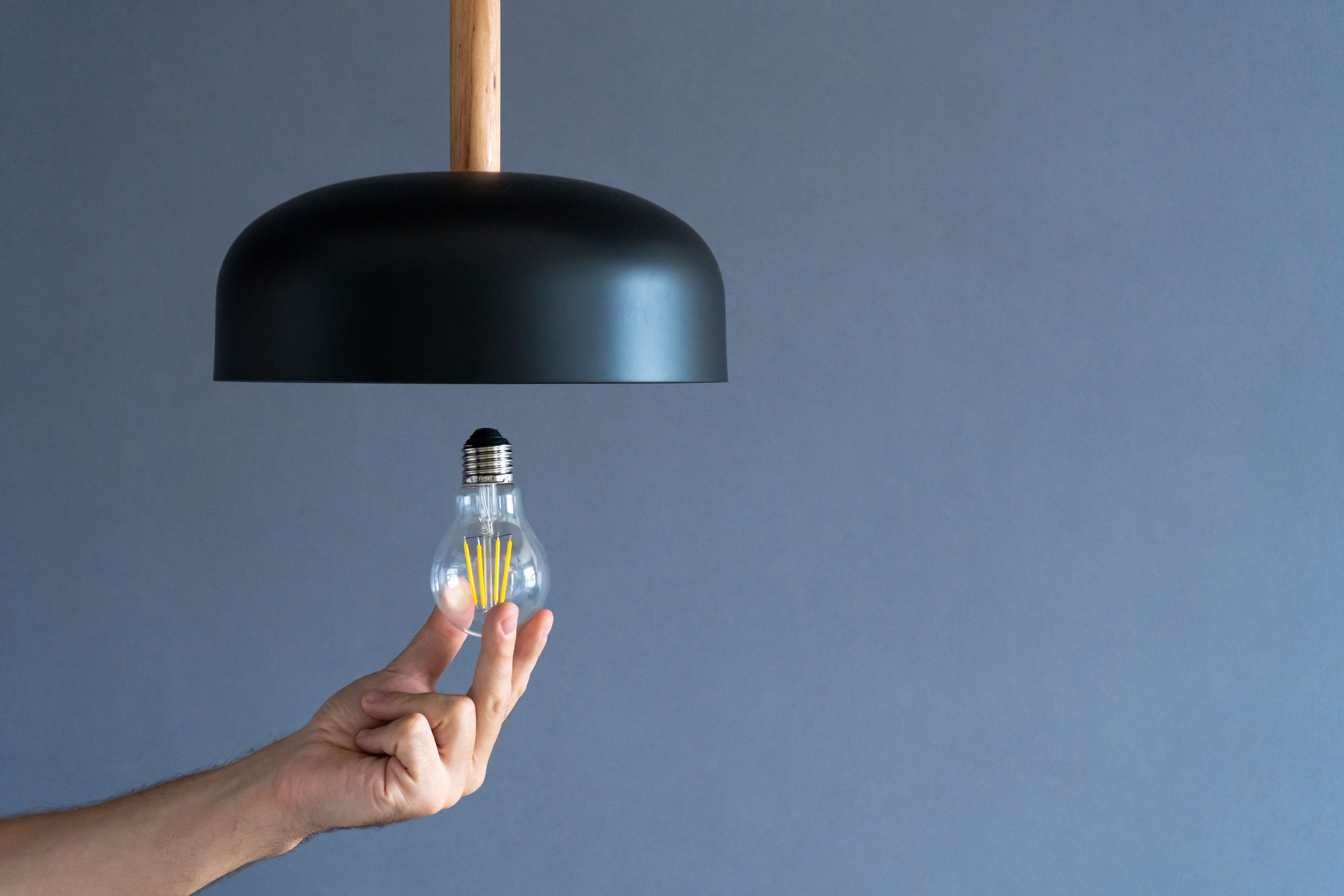
There is no denying that LED bulbs are the best choice for any light fixture. Whether you use a dimmer switch or not, switching to LED bulbs can make your life much easier.
LED Lights Last Longer
So obviously, you want to ensure that you get the most extended lifespan for our bulbs – that’s where LED lights can shine. Your typical LED light has an average lifespan of 25,000 hours. If you use it for three hours daily, you’ll get over 20 years of life from a single bulb – that’s not bad where we’re standing.
Considering that conventional bulbs only last between 1 and 2 years, and CFL bulbs top out at 13 years, it’s a clear choice. LED bulbs last longer and look better. Something like this GU10 Fire-Rated IP65 Downlight is an excellent choice in that respect.
Prices are always on the rise with lighting. Once upon a time, you could light a room with just a single 60W lamp. Nowadays, you need at least one bulb for most rooms, if not more. Considering that each halogen bulb for a house could be between 35 to 50W, quickly pushing 400W for the whole house, the prices get ridiculous.
Suppose we compare this to a typical retrofit LED, the energy used drops to just 6.5W per bulb – a significant reduction in price and cost. We recommend something like the LED Adjustable Triple Spotlight on Round Base for maximum coverage.
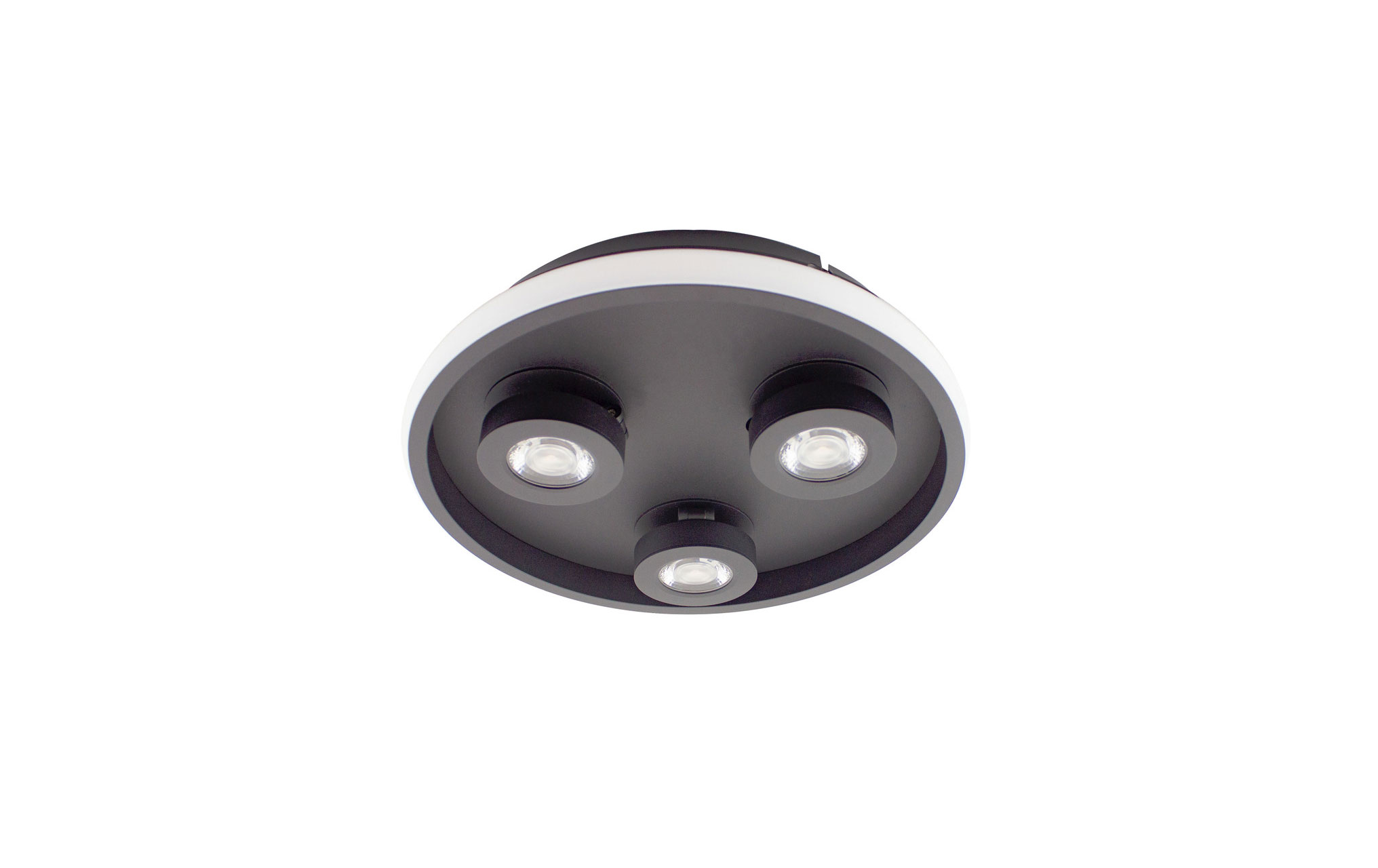
Economic Benefits
A dozen other small benefits can be used to justify making the transition to LED bulbs. It’s essential to understand them all.
LED bulbs are instant, which is helpful because you’re not waiting around for the light. CFL bulbs have a warmup time, making them less practical in the long run. That makes something like this LED Adjustable Triple Spotlight on Round Base great for quick and easy light.
Furthermore, unlike their CFL counterparts, LED bulbs don’t contain any mercury. It isn’t an energy-saving benefit, but it is still helpful to minimise exposure!
The good thing about many LED bulbs nowadays is that they also look pretty standard. Once upon a time, LED bulbs had a funny design that looked like a spaceship, but now they resemble modern light bulbs. Check out this Commercial COB LED Downlight – you can barely tell the difference.
Environmental Benefits
Another great benefit of LED light bulbs is that they are much better for the environment. Obviously, they use much less energy and are more energy-efficient when it comes to long-term usage because you don’t have to replace them. They also need very little maintenance.

When we slash the CO2 emissions that we put into the atmosphere, we get a much better form of environmentally sustainable lighting. Thankfully, LED bulbs are very good at this.
LED bulbs also lose much less heat as part of their natural usage. Conventional bulbs waste a lot of heat energy, which isn’t used for anything but does raise the energy bill.
LED bulbs don’t have this problem because they don’t run as hot as traditional halogen bulbs. You’ll never know that this Set of 5 LED Mini Downlights was ever hot.
Because these LED bulbs run cooler than conventional halogen lamps, they are also much less of a fire risk. Furthermore, the cooler the lamp, the less the deterioration to the actual light fitting you have to deal with. A very hot bulb will start to damage the light fixture over time.
Lots of Savings
There are a lot of potential savings that you can get if you make the transition from incandescent bulbs to LED bulbs. Imagine for a second that you had a 100W incandescent bulb. If you switched to LED bulbs, you could save £15 for each bulb every year.
Switching will save money despite the amount of power running through the bulb. Imagine for a second that you had a 40W incandescent bulb that you switched to an LED. You are going to save roughly £4 per bulb each year.
Switching from halogen bulbs is also an excellent way to save money. It’s not just the incandescent bulbs to benefit from transitioning to LEDs. If you had a 50 W halogen bulb and replaced it with an LED bulb, you could save roughly £6 per bulb annually.
These savings might not seem like much on the surface, but when you consider that there are multiple bulbs in your home, it’s easy to see how you could save a significant sum each year. If you are going to transition to using LED bulbs, then you should do so for every bulb in the house.
Final Thoughts
So, when it comes to LED bulbs and dimmer switches, alone, both are both excellent choices for saving energy and money. However, when combined, they offer control and more significant savings!
The dimmer switch helps control the amount of light used and cuts down on energy. LED bulbs are highly energy-efficient bulbs for any situation, so the result is a very practical tag team.
Obviously, it is essential to recognise that using these bulbs will govern how much money you save. If you are running your lights all the time, it would be a considerable saving for you. However, even moderate light switch uses can potentially generate significant savings if you switch to LED bulbs and use dimmer switches.
If you have dimmer switches installed, it might be worth getting a trained professional to help you. Health and safety are essential; a qualified electrician can install the switch in your home safely and quickly. As for installing LED bulbs, fortunately, it’s straightforward, as all you have to do is screw them in.
Recent Posts
-
Why Premium Switches & Sockets Matter More Than Ever in 2026’s Curated, Layered Interiors
In 2026, interior design is embracing a new level of subtle sophistication, a design language built …4th Dec 2025 -
Human‑Centric & Tunable LED Downlights: Lighting That Adapts
Lighting has evolved far beyond simply brightening a room. Modern illumination is now about shaping …28th Nov 2025 -
Final Touches That Make a Statement: Why Designers Should Treat Switches and Sockets as Key Elements in the Room
In the world of interior design, it’s often the finishing touches that elevate a space from ordinar …13th Nov 2025

